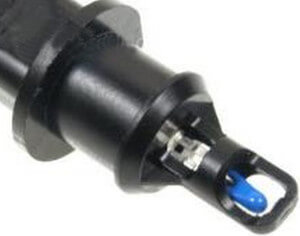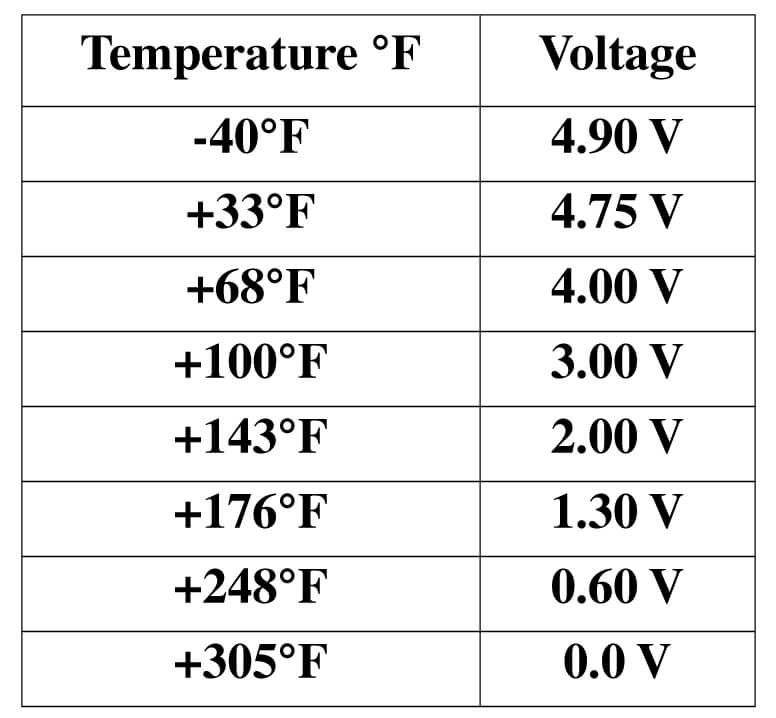Understanding the Role of Intake Air Temperature Sensor
Learn What The Intake Air Temperature Sensor Does, How It Works and How It Fails
An Intake Air Temperature (IAT) sensor is a crucial component in an internal combustion engine’s air intake system. It measures the temperature of the air entering the engine, providing critical data to the engine control unit (ECU). This information helps the ECU adjust the air-fuel mixture, ignition timing, and other parameters to optimize engine performance, fuel efficiency, and emissions.
Types of IAT sensors

Intake Air Temperature Sensor
The intake air sensor can be a stand-alone sensor or incorporated into other sensors, such as the MAP or Mass Airflow Sensor (MAF).
How an intake air temperature sensor works
Most IAT sensors are either positive temperature coefficient or negative temperature coefficient thermistors. The PCM/ECM supplies a voltage to the sensor and the sensor alters the incoming voltage by applying a varying amount of resistance based on the air temperature.
• A negative temperature coefficient thermistor decreases resistance as the temperature increases
• A positive temperature coefficient thermistor increases resistance as the temperature increases.
If the PCM/ECM supplies a 5-volt input signal, it should see a return voltage, as shown below

Intake air temperature voltage values and
How the ECM uses data from the intake air temperature sensor
• To determine the correct air-fuel ratio— The density of air changes with temperature; cooler air is denser and contains more oxygen, while warmer air is less dense. The IAT sensor helps the ECU adjust the amount of fuel injected into the engine based on the air temperature to maintain the optimal air-fuel ratio. This is critical for efficient combustion and optimal engine performance.
• Ignition Timing— The ECU can adjust the ignition timing based on the intake air temperature. For example, in colder air, the ECU may advance the timing to optimize combustion.
• Emissions Control— By helping to maintain the correct air-fuel mixture, the IAT sensor plays a role in reducing harmful emissions. Proper air-fuel ratios are crucial for the efficient operation of the catalytic converter and other emissions control systems.
• Engine Protection— Accurate air temperature readings help protect the engine from conditions like pre-ignition or knock, which can occur if the air-fuel mixture is too lean or too rich.
• Turbocharged and Supercharged Engines— In forced induction engines, the IAT sensor is particularly important for monitoring the temperature of compressed air. This data helps the ECU manage boost pressure and avoid potential overheating or detonation issues.
What goes wrong with the intake air temperature sensor?
Like any other sensor, the sensing element can fail, the terminals in the electrical connector can corrode and alter the readings, or the wiring harness can develop a short or open.
Symptoms of a bad IAT
• Check Engine Light: A malfunctioning IAT sensor can trigger the check engine light due to out-of-range or erratic temperature readings.
• Poor Fuel Economy: Incorrect air temperature data can lead to improper fuel mixture adjustments, resulting in reduced fuel efficiency.
• Engine Performance Issues: Symptoms may include rough idling, hesitation, or poor acceleration.
Increased Emissions: An improper air-fuel mixture can lead to higher emissions, potentially causing the vehicle to fail emissions tests.
• Starting Problems: The engine may have difficulty starting, especially in extreme temperatures, if the IAT sensor is not functioning correctly.
How to test an IAT sensor?
You can test an IAT sensor using a digital Ohm Meter set on the DC volts scale. Turn the IGN switch to the ON position and backprobe the return wire to see the voltage being reported to the PCM/ECM. You can also test the sensor’s resistance, but that’s not as accurate as reading the actual return voltage.
How to replace an intake air temperature sensor?
IAT sensors can be screwed into the intake manifold or simply pushed into a rubber grommet. Remove the old sensor and install the new sensor.
©, 2018 Rick Muscoplat
Posted on by Rick Muscoplat